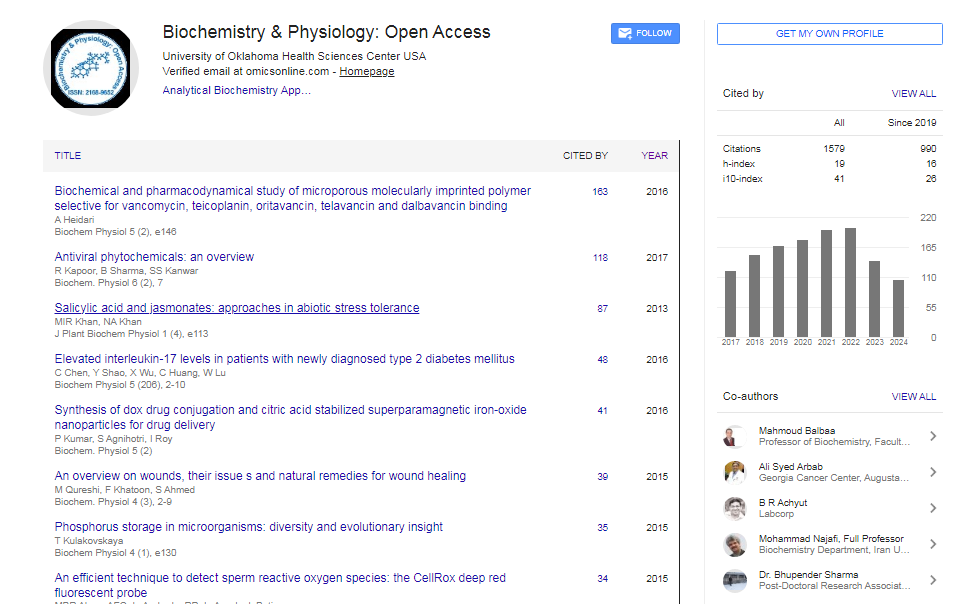Research Article
Synthesis of Dox Drug Conjugation and Citric Acid Stabilized Superparamagnetic Iron-Oxide Nanoparticles for Drug Delivery
| Pramod Kumar*, Shrish Agnihotri and Indrajit Roy | |
| Department of Chemistry, University of Delhi, Delhi-110007, India | |
| Corresponding Author : | Pramod Kumar Department of Chemistry, University of Delhi, Delhi-110007, India Tel: +91-9711065966 E-mail: pramodgang03@gmail.com |
| Received: December 10, 2015; Accepted: January 06, 2016; Published: January 13, 2016 | |
| Citation: Kumar P, Agnihotri S, Roy I (2016) Synthesis of Dox Drug Conjugation and Citric Acid Stabilized Superparamagnetic Iron-Oxide Nanoparticles for Drug Delivery. Biochem Physiol 5:194. doi:10.4172/2168-9652.1000194 | |
| Copyright: © 2016 Kumar P, et al. This is an open-access article distributed under the terms of the Creative Commons Attribution License, which permits unrestricted use, distribution, and reproduction in any medium, provided the original author and source are credited. | |
Abstract
In this manuscript, we report a novel, low cost and easy synthesis, iron-oxide nanoparticles were synthesized via room-temperature reduction of a mixture of ferric and ferrous salts, containing citric acid as capping agent. Next, anticancer drug doxorubicin (Dox) was used to form electrostatic conjugation with these nanoparticles. The resulting drug-nanoconjugates were characterized for their size, composition, functionality, crystallinity, along with their magnetic and optical behavior. Following that, they were treated with cultured lung carcinoma cell lines (A 549) to probe their non-toxicity and biocompatibility. Concurrently, their uptake in cells in culture was studied by optical bioimaging. In vitro studies have shown that these nanoparticles are nontoxic (using MTT assay) to cells in culture.

 Spanish
Spanish  Chinese
Chinese  Russian
Russian  German
German  French
French  Japanese
Japanese  Portuguese
Portuguese  Hindi
Hindi 